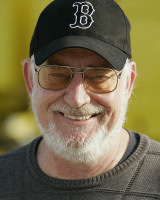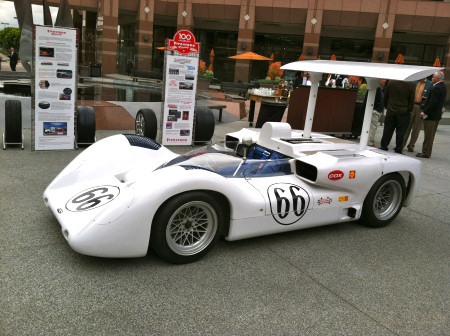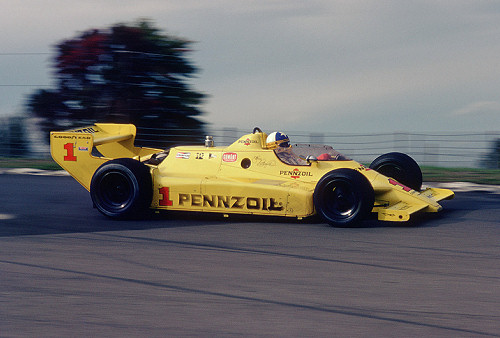The Way It Is/ How aerodynamics took over the sportby Gordon Kirby |
 Christian Horner got to the heart of the matter last week when he suggested that wind tunnels should be banned from motor racing. The great god of aerodynamics has been assiduously pursued in racing over the past forty years and has become the sport's controlling element but many people, Horner included, believe it's been a bad thing financially, aesthetically and as far as 'the show' is concerned.
Christian Horner got to the heart of the matter last week when he suggested that wind tunnels should be banned from motor racing. The great god of aerodynamics has been assiduously pursued in racing over the past forty years and has become the sport's controlling element but many people, Horner included, believe it's been a bad thing financially, aesthetically and as far as 'the show' is concerned.
Today, from Formula 1 to NASCAR, everyone complains their cars are too dependent on aero thus making passing more and more difficult. And of course in the last ten or fifteen years wind tunnels and the mad pursuit of aero efficiency have produced a steady stream of ever uglier cars as far removed as possible from beauties like a Maserati 250F or a Lotus 79 or Chaparral 2K. Wind tunnels came into serious use in motor racing in the mid nineteen-seventies when Colin Chapman hired Peter Wright to work with Ralph Bellamy to design the ground-breaking Lotus 78 and 79. Aboard these striking JPS Lotus F1 cars Mario Andretti challenged for the 1977 World Championship before winning the title the following year and ushering in the ground-effect era which remains with us today. If anyone can be called the father of ground effects in motor racing it's Peter Wright who likes to joke these days that Jim Hall and he ruined the sport by putting the focus on aerodynamics and wind tunnels. Hall of course was the man behind the Chaparral Can-Am and long-distance sports cars in the sixties and the Chaparral 2K Indy car in the late seventies and early eighties.  © John Oreovicz In the sixties Hall's Chaparral Can-Am cars captured many imaginations and revolutionized racing as Hall and his small team dabbled in aerodynamics without the use of a wind tunnel. "We started building Chaparral 2 in 1962," Hall recalls. "I was running it complete with bodywork pretty early in '63. It took us a little while to make the body and once we got it on the car it made terrible lift. So we cured that by putting a snowplow-looking thing on the nose for Riverside and that's the way we ran the car in the first races at the end of '63. "During the winter I did a lot of testing to try to figure out the aerodynamics and that's where that whole thing started. By the time we started the '64 season the body was working pretty good. I'd made the radiator air inlet come right off the bottom of the car and exit in front of the windshield. That made a tremendous difference in the front end lift. We re-shaped part of it and by the time we started '64 it was a pretty darned good car. By '65 it was good and reliable and I pretty much had the measure of everybody." Hall and his partner Hap Sharp scored a dominant win at Sebring in 1965--fifty years ago this week--leading almost all the way from pole to win by four laps. They also dominated that year's United States Road Racing Championship winning seven of eight races between them. As the Can-Am arrived in 1966 the Chaparrals sprouted high wings before Hall began to explore ground effects with the help of GM's R&D department resulting in the 2J 'sucker car'--the first true ground-effect car. The team also successfully tackled long-distance sports car racing in Europe in 1966 and '67 with the 2D and high-winged 2F. "It was fun because we were a small, really tight-knit team and there was some differences of opinion," Hall recalls. "I was doing a lot of the design, plus I was the test driver and the development engineer. In those days we could have a major impact on what was being done in the sport with a small team with just a few guys who sat down and talked about all of it and decided how best to go about it.  © Paul Webb "We were a little isolated down where we lived in Texas and I was fortunate to find some good guys that were loyal and stayed with us. Troy Rogers, Franz Weis and Gary Knutson were a pretty tight bunch for quite a while and I don't think that happens so much anymore. The teams are so big and people get offers to go someplace else and there's a lot more money in it. That makes a lot of difference. "I wouldn't trade it for anything. I learned an awful lot and I enjoy learning things and we accomplished a lot. We worked hard at it. People ask me why we were successful and I say because we worked hard at it. We tried to learn and tried not to make the same mistake too many times. That's the way we went about it. It was a great time in my life. I was young and could absorb a lot of stuff and learn from it and be able to think ahead. "It was a really interesting time and I think it's just one of those things that happens during life or history," Hall adds. "Those kind of things come together in a certain way. As I look back on it, it was amazing the way those cars developed during those seven or eight years. It was a really amazing time." A few years later Peter Wright pioneered the use of wind tunnels in motor racing. Wright worked for Colin Chapman at Lotus in many engineering capacities from 1973-'94. For some years thereafter he was the FIA's technical advisor with worldwide responsibility for racing and passenger car safety. Wright was always interested in aerodynamics. In the late sixties he did a design study for a wing-shaped BRM F1 car, which was never built, and in 1969 he suggested to March designer Robin Herd that he try airfoil-shaped side pods in the March 701 F1 car. "Out of the BRM work came the March, which was pretty primitive," Wright says. "Nothing more happened until we started the program with Ralph Bellamy on the Lotus 78. Tony Rudd was asked by Chapman to rethink the Grand Prix car and Ralph Bellamy was the designer. I was told to run the wind tunnel with Ralph. "So I dug out the old ideas on ground effect and we sat down with the type 78 and said, let's start from first principles and see what we can do with a pencil-thin car. Let's find out what sort of nose it wants, what sort of side pods it wants, and where do we put the radiators. We did everything from scratch with a proper wind tunnel program." Wright did his wind tunnel work at London's Imperial College where a rolling road had been designed and installed by John Stollery who was the aerodynamicist for British land and water speed record king Donald Campbell.  © Racemaker/Paul Webb "We heard that when the type 78 came out Ferrari built an equivalent version and tested it in a tunnel in Italy without a rolling road, and they said, 'Ah, it doesn't work.' So yes, if you don't have a rolling road you will definitely get the wrong airflow conditions underneath the car." Wright described the process of designing the 78. "We started by looking to see whether we wanted a wide nose or front wings and we played around a little bit with front wings near the ground. We also looked at the effect of the wheels and what the effect was of the height above the ground. "We got a quite a long way down the wind tunnel program and we had the radiators in airfoil section side pods. Initially it didn't do very much but it was a way of putting some fuel in the car and the radiators in without any sort of penalty. Ralph wanted to move the weight back a bit so the radiators needed to go in the side rather than the nose." Wright says the chimera he'd been chasing suddenly took shape one day in the wind tunnel. "One famous day we started getting very inconsistent results and I noticed that the side pods were sagging. We did some back-to-backs. We wired them up and got them to work properly, so that they didn't move, and then we got consistent results again. Thinking about it, we said it must have been the gap between the side pod and the road. So we filled-in the gap with pieces of card paper and, eureka! "It all went click, click. About six years work suddenly went click. If you thrash around in the right area, you'll find it in the end. And really, from that point onwards it was an intensive program." Wright and Ralph Bellamy spent a year doing development work on skirts and skirt systems. "We had a Renault 4 van which we used to mount skirts on the back and rush around with me hanging out the back watching them, which was very instructive," Wright grins. "And we came up with a skirt system about a third of the way through the year which first ran at the Dutch GP and it completely transformed the 78. It really made it work."  © Racemaker/Paul Webb "In Indy car racing John Barnard and I kind of copied the Lotus 79," Hall remarks. "We put together an Indy car with the radiators in the side pods and the driver located where he is. The position of the tunnels and everything in that car was very similar to the Lotus 79. "Since then every Indy car up to this time remains the same in essential layout and concept. They're certainly much more sophisticated in their manufacture and have a lot more performance in a lot of ways but the configuration is basically the same. "What happened was everybody ended up with the same configuration and that's where the innovation stops a little because once everybody's focused around what works the best it's hard to jump to something new. Again, once you zero in on what works best its damn difficult for anybody to say that there's a better way to do it." Indeed, the past thirty-five years have witnessed nothing more than a refining and fettling of the Lotus 78/79 and Chaparral 2K concepts. Increasingly vast amounts of money have been spent on aerodynamicists and wind tunnels yet the revolutions we saw in the sixties and seventies have become relics of a distant past. The sport today is about ever more arcane aerodynamic details and it's given us a kind of racing where passing often is ridiculously difficult, where all the cars look much the same and many of them are painfully ugly too. It's probably impossible to ban the use of wind tunnels but a truly powerful, vibrant sanctioning body would surely find it a goal worth pursuing. |
|
Auto Racing ~ Gordon Kirby
Copyright ~ All Rights Reserved |
